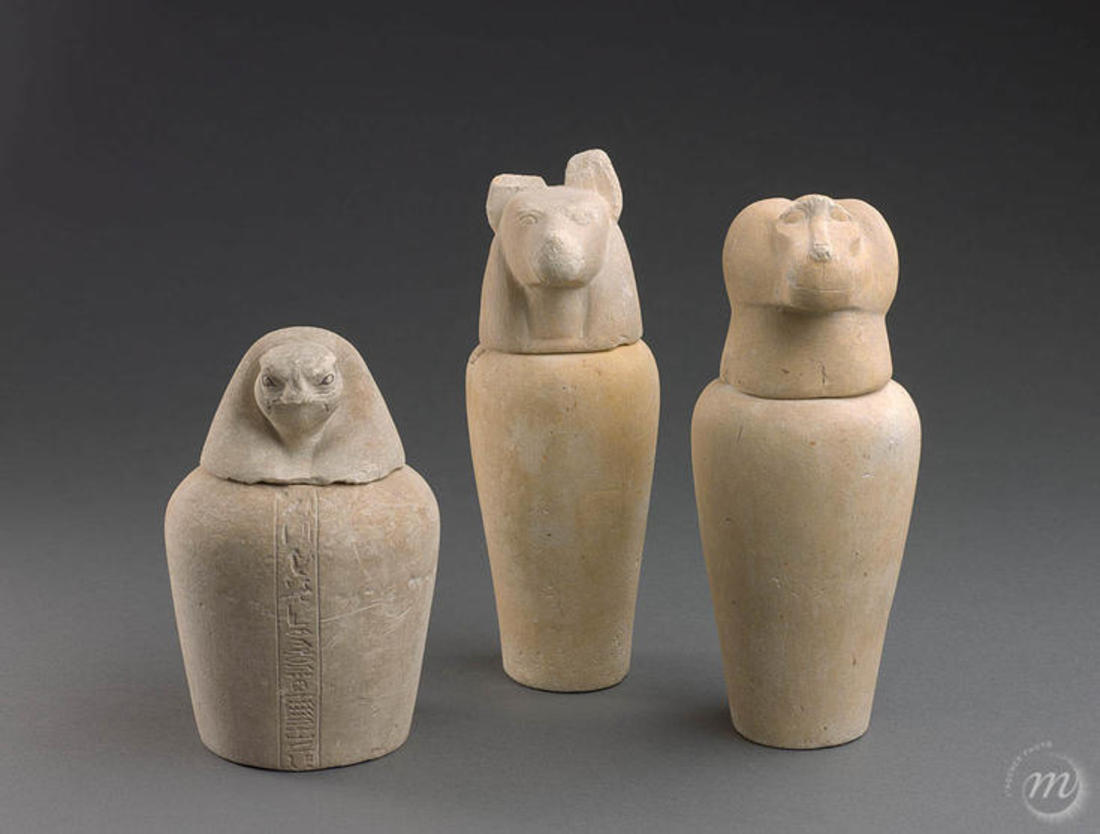Like the three musketeers, there are not three but four canopic jars, for the four organs removed during mummification: the lungs, the stomach, the intestine and the liver. To ensure their proper preservation and functioning in the Afterlife, they themselves are mummified and enclosed in small, specific jars.
Each of these, positioned in front of the deceased, is placed under the protection of the sons of Horus, who watch over the deceased's vital organs and their reunification after death. To recognise each of the deities, the Egyptians gave them each their own unique morphologies: there was Hapy the baboon, Duamutef the jackal, Qebehsenuef the falcon and Imsety, with the head of a man. Thanks to the four sons of Horus, the mummy would be whole again, with all its constituent parts. Like real musketeers, they protect it and ensure that the deceased lives on the Afterlife.
However, as is often the case in Egypt, looks can be deceiving. During the 1st millennium, embalming methods became simpler and faster to allow as many people as possible to be mummified. Viscera were no longer removed in all cases and, when they were, they were returned to the body after mummification. However, canopic jars were still placed before the deceased and were still intended to ensure their body's integrity. Their presence became largely symbolic, to the point where the jar and its stopper were made from a single sculpture and could not be opened.

Like the three musketeers, there are not three but four canopic jars, for the four organs removed during mummification: the lungs, the stomach, the intestine and the liver. To ensure their proper preservation and functioning in the Afterlife, they themselves are mummified and enclosed in small, specific jars.
Each of these, positioned in front of the deceased, is placed under the protection of the sons of Horus, who watch over the deceased's vital organs and their reunification after death. To recognise each of the deities, the Egyptians gave them each their own unique morphologies: there was Hapy the baboon, Duamutef the jackal, Qebehsenuef the falcon and Imsety, with the head of a man. Thanks to the four sons of Horus, the mummy would be whole again, with all its constituent parts. Like real musketeers, they protect it and ensure that the deceased lives on the Afterlife.
However, as is often the case in Egypt, looks can be deceiving. During the 1st millennium, embalming methods became simpler and faster to allow as many people as possible to be mummified. Viscera were no longer removed in all cases and, when they were, they were returned to the body after mummification. However, canopic jars were still placed before the deceased and were still intended to ensure their body's integrity. Their presence became largely symbolic, to the point where the jar and its stopper were made from a single sculpture and could not be opened.